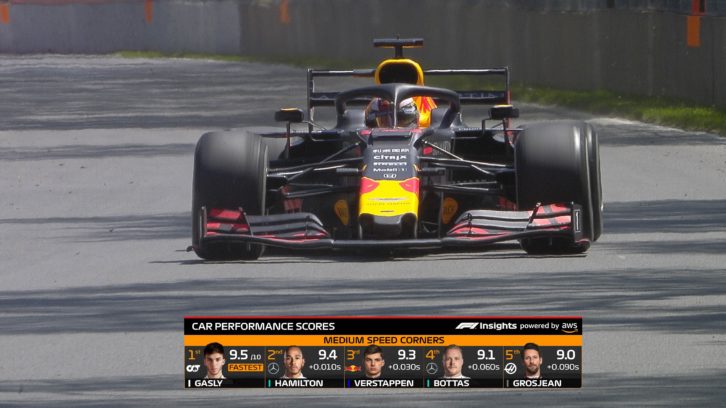Amazon Web Services and Formula 1 are introducing six new, real-time racing statistics that will roll out through the 2020 season.
The new stats will launch with “Car Performance Scores” at the season opening Grand Prix in Spielberg, Austria.
The Scores isolate an individual car’s performance and allows race fans to compare its performance to that of different vehicles head-to-head. The information will display as an on-screen graphic giving viewers a complete breakdown of a car’s total performance using four core metrics: Low-Speed Cornering, High-Speed Cornering, Straight Line, and Car Handling.
Further insights due to be launched during the season include:
- Ultimate Driver Speed Comparison: Allows race fans to see how their favourite drivers compare to other drivers in history, dating back to 1983. Due to launch at the Emirates Grand Prix, 7-9th August
- High-Speed/Low-Speed Corner Performance: Lets fans see how well drivers tackle the fastest bends on the track travelling at more than 175 kph/109 mph and slow cornering. Due to launch at Belgian Grand Prix 28-30th August
- Driver Skills Rating: Breaks down and scores driver skills, based on the most important factors for overall performance, to help identify the best “total driver” on the track. Set to debut in the second half of the season
- Car/Team Development & Overall Season Performance: As the season unfolds, this will plot a team’s cumulative performance from race to race to uncover the development rates of each team. Debuts the second half of the season
- Qualifying and Race Pace Predictions: Gather data from practice and qualifying laps to predict which team is poised for success ahead of each race session. Ddebuts the second half of the season

To create the insights, Formula 1 will use 70 years of historical race data stored in Amazon Simple Storage Service (Amazon S3), combined with live data that is streamed from sensors on F1 race cars and the trackside to the Cloud through Amazon Kinesis, a service for real-time data collection, processing, and analysis.
F1 engineers and scientists will then use this data to leverage machine learning (ML) models with Amazon SageMaker, AWS’s service for building, training, and deploying ML models. Formula 1 is able to analyse race performance metrics in real-time by deploying those ML models on AWS Lambda, which runs code without the need to provision or manage servers.
All of the insights will be integrated into the international broadcast feed of Formula 1 races as well as its digital platform F1.TV.





